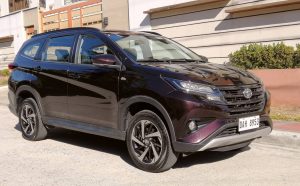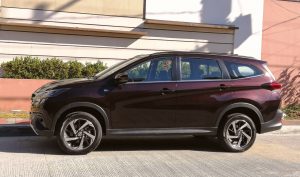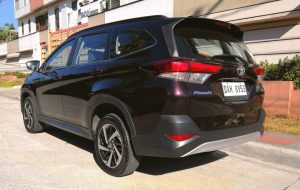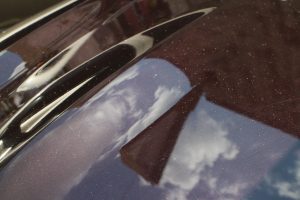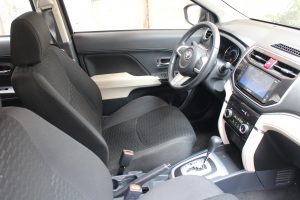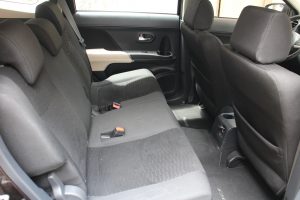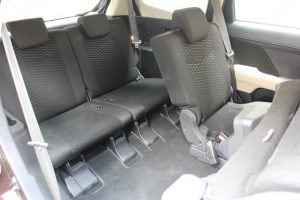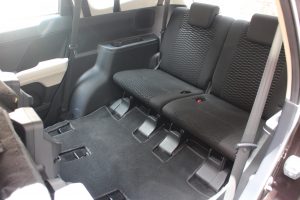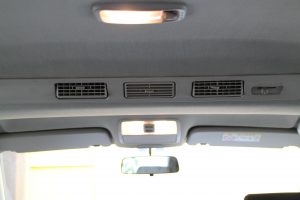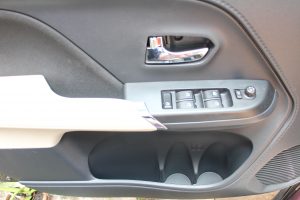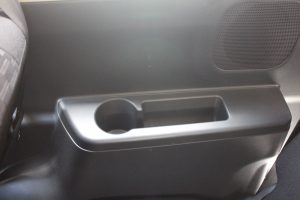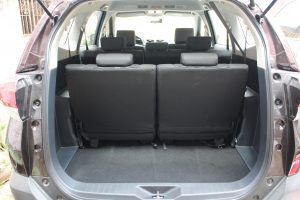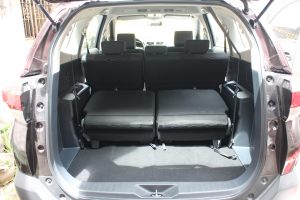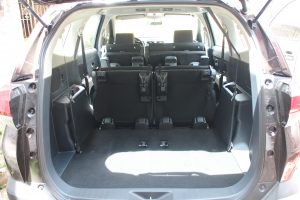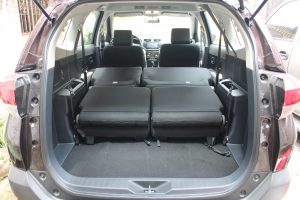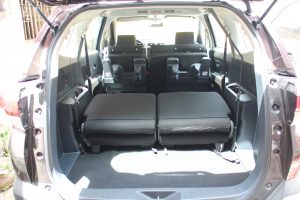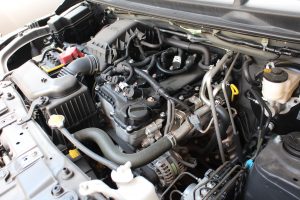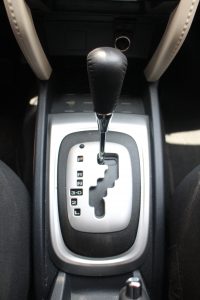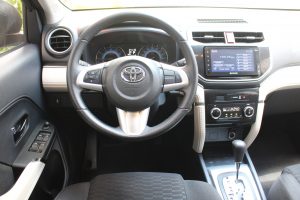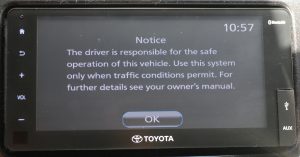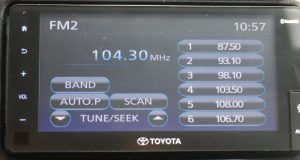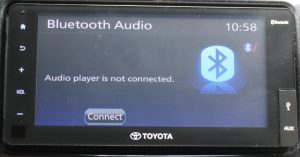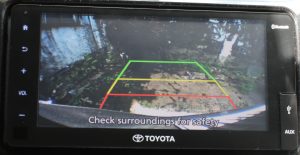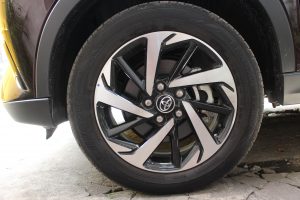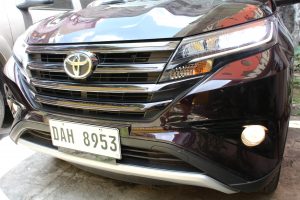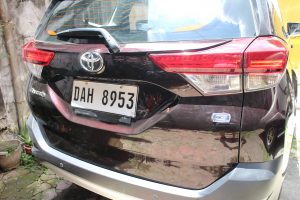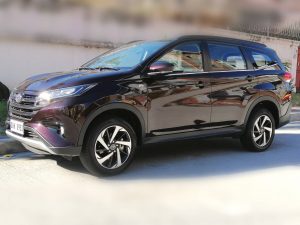From November 18 to December 10, 2005, I rode a Yamaha Sniper 135 around Indonesia along with a convoy of riders from other ASEAN countries – Indonesia, Thailand, Malaysia, Singapore, Vietnam, and the Philippines – mounted on similar motorbikes for the Yamaha Pan-ASEAN Touring series. During our ride, which started from Jogjakarta in Java and ended at Medan in Sumatra, I noticed a lot of compact multipurpose vehicles (MPVs) on the road that turned out to be the Toyota Avanza/Daihatsu Xenia. I later learned that the Avanza has become the biggest selling vehicle in Indonesia after its introduction in November 2003. I knew that it would only be a matter of time before it would be introduced in the Philippines. (The Toyota Avanza was launched in 2006.)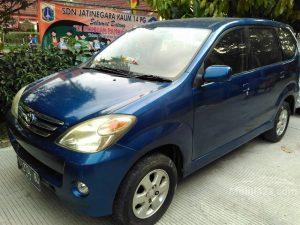
The enormous success of the Avanza/Xenia prompted Toyota to create a compact sport utility vehicle (SUV) based on their compact MPV’s unibody chassis platform. Thus, the third generation Daihatsu Terios (F800) was unveiled in Indonesia on November 23, 2017, along with the second generation Toyota Rush. To differentiate it from the Avanza/Xenia compact MPV, the new Rush/Terios compact SUV is more streamlined than its predecessors. It has a rear liftgate instead of a side-opening rear door and the spare tire that’s mounted underneath. The new Rush/Terios model is sold in a single 2,685-millimeter wheelbase variant only, and nicely fills the void between the compact Avanza and the larger Toyota Innova MPVs.
A Rose is a Rose…
Speaking of the Innova, it shares its IMV platform with the Toyota Hilux pickup and the Toyota Fortuner, which is currently the best-selling SUV in the country. Thus, it is seen that the Toyota Rush is the budget SUV for those whose hearts say “Fortuner” but whose wallets say “Avanza”. Despite sharing the unibody chassis of the Avanza, the Rush offers similar interior amenities as its bigger SUV brethren. Our Rush 1.5 G test drive unit is a 7-seat variant, configured in 2-3-2 layout covered with comfortable and durable cloth seats, and with the second row foldable in a 60:40 split while the third row is 50:50. With the third row backrest folded down, there are 217 liters of storage space, which is expanded to 514 liters when tumbled up. Folding or tumbling the second row seats adds even more storage space and cargo-carrying capacity.
The front seats are generously padded and bolstered to provide a high perch for the driver and front passenger. With a large windshield and tall seats, the view outside is unperturbed. Second row seating is likewise comfortable, albeit with less padding, but we noticed that the larger 60% split folding seat is mounted at the right side, perhaps due to the fact that the Rush is assembled in Indonesia, a right-hand-drive market. The third row may be a little cramped for taller passengers but it can be great place for kids since there are a lot of cubby holes to put their drinks, gadgets and stuff. It only goes to show that you can make a compact SUV out of a compact MPV with a lot of thoughtful engineering and design.
Stands Out Against Competition
The Rush surprised us with the interior space it offered despite having a rear-wheel-drive chassis, where the engine, a 103-horsepower 1.5-liter inline 4-cylinder 2NR-VE with double overhead cams (DOHC), sixteen valves (16V) and dual intelligent variable valve timing (VVTi), and 4-speed automatic transmission is positioned north-south while a driveshaft runs underneath the cabin. This longitudinal drivetrain layout and the resulting intelligent packaging differentiate the Rush from its front-wheel-drive competitors. Those who believe that front wheels were made to steer and rear wheels were made to provide drive ought to be very happy with the Rush.
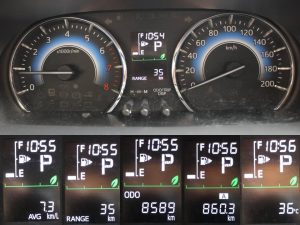
LCD screen in the middle of the gauges displays average fuel mileage, range, odometer, trip meter and outside temperature.
Like the Fortuner, Hilux and Innova, the live rear axle of the Rush requires an ingenious suspension design to make the ride tough enough to handle seven (or more) passengers plus their belongings and comfortable enough not to jar said passengers and their belongings. Of course, the slight trade-off is that the ride feels a bit choppy at speed when there are only front passengers but when you’re travelling as a family or as a team, the Rush can provide a smooth comfortable ride. Road feedback is transmitted to the driver by stylish 17-inch 10-spoke polished/painted aluminum alloys wrapped with Dunlop Enasave EC300+ measuring 215/60R-17 tires, which makes the Rush resemble the Fortuner even more. In fact, they resemble each other so nearly that my eyes used to trick me into mistaking the Rush for the Fortuner when I see one on the road.
Going back to my 2005 observation about the Avanza in Indonesia, I realized that our Philippine market, which is heavily influenced by American tastes, will embrace the bigger SUV more than the compact MPV in spite of our narrow roads. Our Indonesian brothers seem to be more practical by choosing the Avanza over the larger Kijang (Innova) or the Fortuner. But with the growing population of Toyota Rush units we now see on our roads, I believe that our market is beginning to see the light.
Specifications
Vehicle type : Front-engine, RWD, 5 passenger, 5-door MPV
Price : P1,090,000
Engine type : Liquid-cooled DOHC 16V inline-4 Dual VVTi 2NR-VE
Displacement : 1496cc
Power : 103hp@6000rpm
Torque : 136Nm@4200rpm
Transmission : 4-speed automatic
Wheelbase : 2685mm
Length : 4435mm
Width : 1695mm
Height : 1705mm
Curb weight : 1770kg
Fuel capacity : 45 liters
Wheels and tires : Dunlop 215/60R-17 tires
Contact Details
Toyota Motor Philippines Corporation
Santa Rosa, Laguna
 Power Wheels Magazine A Notch Above
Power Wheels Magazine A Notch Above


